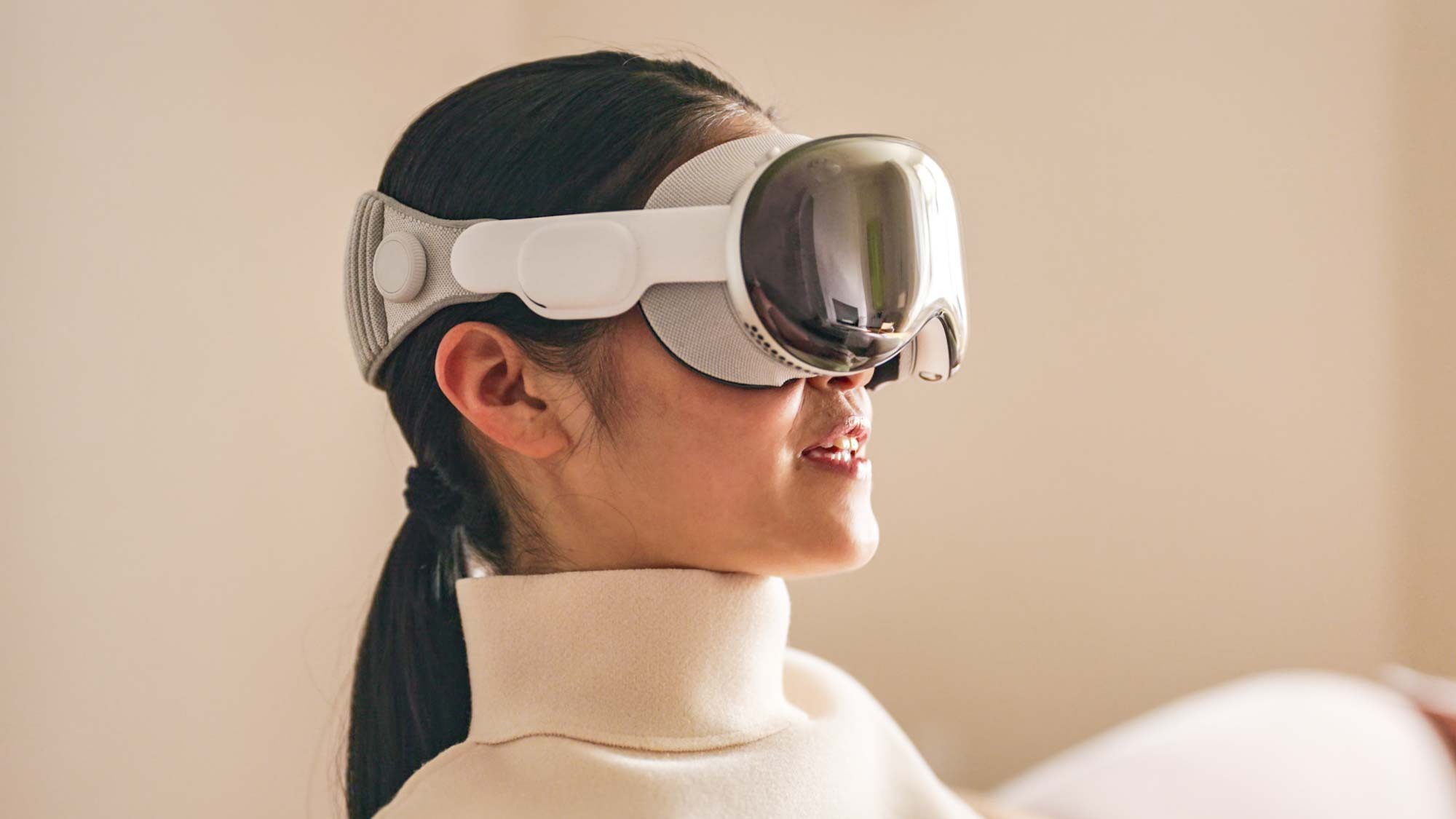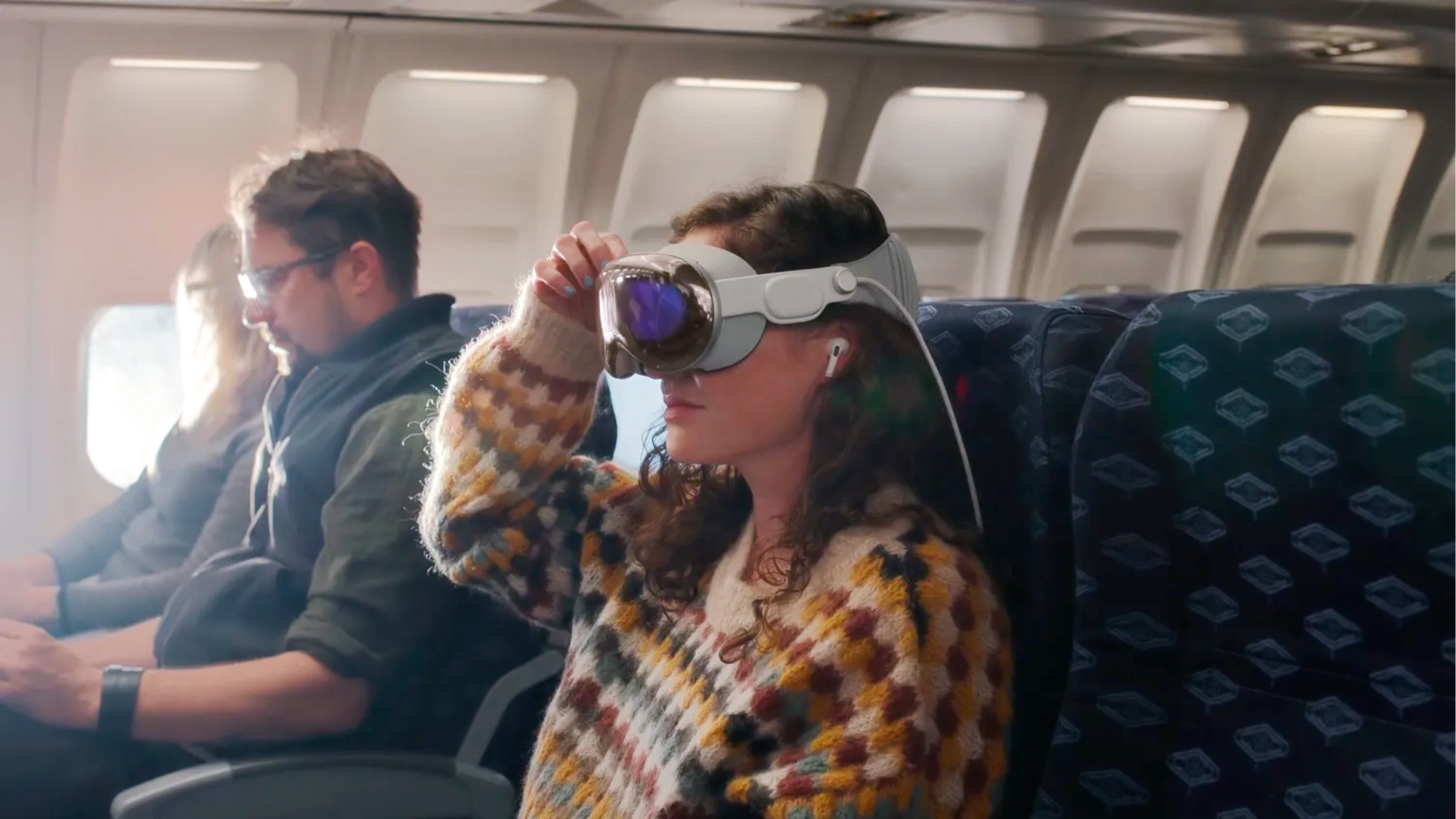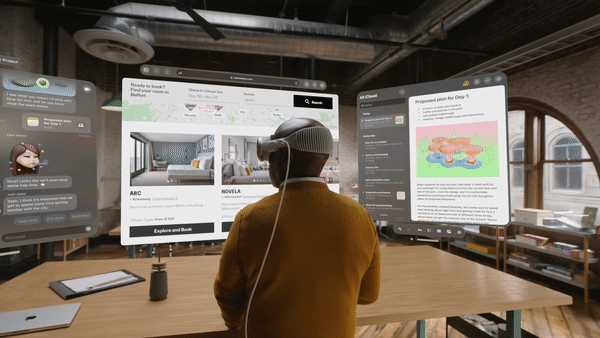I'm not buying an Apple Vision Pro — but here's how Apple could change my mind

There are few certainties in life — death and taxes are the two commonly cited ones. But to that list, you can add a third: when the Apple Vision Pro goes on sale February 2, I won't be lining up to buy one.
It's not the $3,499 price tag, though really, Apple, do I look like I'm made of money over here? And it's not that I doubt Apple's workmanship or that it won't deliver a fine spatial computing headset. Between the positive Apple Vision Pro hands-on sessions and the rave reviews about watching spatial video on the headset, it seems like Apple has designed a well-thought-out, feature-rich product.
It's also a well-thought-out, feature-rich product that fills no unmet need in my life or solves any problem I have yet to encounter. Other than that, it seems fine.
As a mental exercise, though, I've been thinking about if there's any circumstance under which I'd rethink my position on the Apple Vision Pro. I can insist at the moment that I'll never buy one, but "never" is an awfully long time. Surely, a company as clever as Apple will find a way to learn from this initial headset release and make a more compelling product down the road that even a grump like me would have to consider buying.
It could happen, I've decided, but it's going to be a hard mountain for Apple to climb.
What the Apple Vision Pro has going against it

There's the matter of cost, of course, because to answer my own question from the beginning of this article — no, I am not made of money. And $3,499 is too much to spend on something that doesn't involve food, shelter or life-giving oxygen. If there's a cheaper Apple Vision Pro down the road — and reports of such a device arriving in 2025 have subsequently been dismissed — then we can start talking headsets.
Even then, Apple would still have to overcome my long-standing complaint about any headset I've ever worn — they are just not very comfortable to wear for prolonged periods. The area where a headset forms a seal around my eyes gets very sweaty, even more so if I'm gaming or moving around, and I just wind up feeling gross right after I take off the device.
Get instant access to breaking news, the hottest reviews, great deals and helpful tips.
Apple seems to be putting some thought into comfort by offering different kinds of straps for the Vision Pro. And maybe it will have finally cracked the sweat problem that's made wearing headsets from Meta, HTC, Samsung and others so unpleasant for me. But that's an area where we'll have to wait and see how the Vision Pro performs under every day use
An even bigger hurdle is how isolated I feel when I strap on a headset. There's something to be said for immersing yourself in a game or a video, but the downside is that it makes me feel cut off from the rest of the world. I'm sure it must be wild watching a movie on the 100-foot-wide screen the Vision Pro can simulate right in front of your eyes, but movies to me are a shared experience. I would much rather watch them with friends and family even if it's on a relatively smaller flat-screen TV.
Apps to the rescue

But there is something the could convince me into giving headsets — the Apple Vision Pro in particular — a second try. Unfortunately for Apple, it's something that's out of the company's hands.
The Apple Vision Pro is going to need apps. And it's going to need apps that deliver features you can't get on any other device.
I'm talking about something other than iPhone and Mac apps rewritten for the Vision Pro's visionOS. Seeing an app interface that's normally on my iPhone screen float in front of me on a headset's display is not really what I have in mind.
Rather, I want an app that specifically takes advantage of the Apple Vision Pro's feature set — something that uses the expansiveness of the display, the processing power and the ability to mix real and virtual worlds to create a unique experience. That would cause me to change my tune about spatial computing.
As to what app that would be? Well, if I knew, I'd be making the tall app maker dollars and able to swing a $3,499 headset. But the idea I keep coming back to is an app that makes use of overlays — say a recipe app that has the steps floating in front of me so that my hands are free to chop and carve and that can all up videos to remind me how to perform specific cooking techniques.
I could also see augmented reality playing a big role in DIY apps, superimposing instructions on whatever I'm trying to build or repair. And every time I'm wandering around a new city, I wish I had a heads-up display that could call out points of interest, surfacing facts and descriptions when I want to know more about a particular landmark. That sounds like something the Vision Pro could handle perfectly — assuming I'd ever be comfortable wandering around in public with thousands of dollars of hardware strapped to my face.
Apple Vision Pro outlook
App makers have boosted Apple's hardware before. You only need to look back at the app boom more than a decade ago to see how apps made the iPhone and later the iPad more appealing than they were with just Apple's built-in software. History could well repeat itself with the Apple Vision Pro, but it's going to take time, patience and a little bit of luck.
More from Tom's Guide
- Trying out the Apple Vision Pro will involve an epic 25-minute demo
- 7 things that surprise me most about the Apple Vision Pro
- Apple Vision Pro could launch without a key productivity feature — what we know
Philip Michaels is a Managing Editor at Tom's Guide. He's been covering personal technology since 1999 and was in the building when Steve Jobs showed off the iPhone for the first time. He's been evaluating smartphones since that first iPhone debuted in 2007, and he's been following phone carriers and smartphone plans since 2015. He has strong opinions about Apple, the Oakland Athletics, old movies and proper butchery techniques. Follow him at @PhilipMichaels.

